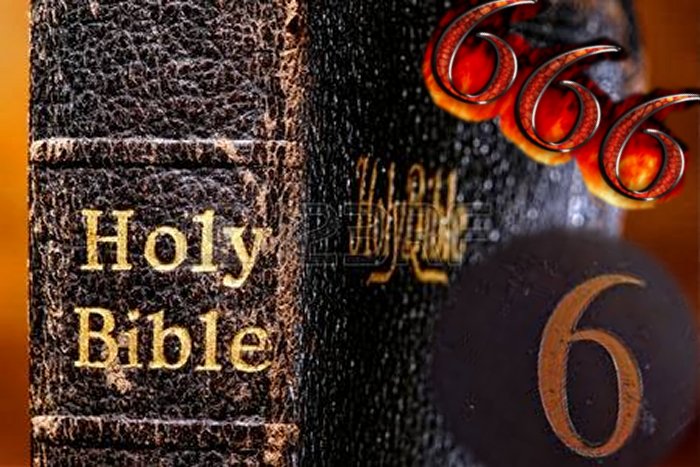Sacred Number Six And Its Symbolic Significance In Ancient Cultures
A. Sutherland - AncientPages.com - Number Six has an interesting significance; it is one of the few symbolic series in the Christian tradition that are based on the number six.
In the Holy Bible, this number indicates imperfections as it is considered an incomplete seven, which means that something is missing and it has to be fulfilled for the divine seven to come.
The world was created for six days, and the seventh was a day of rest, according to Genesis 2:2 and on the 6th day of the week, Jesus died on the cross.
The number 666 - coded information about the identity of Antichrist - is widely known and mentioned in the Bible.
Revelation 13:18 says:
“Here is wisdom Let him who has understanding calculate the number of the beast, for the number is that of a man; and his number is six hundred and sixty-six…”
Another verse is Ezra 2:13 is mentioning the sons of Adonikam, 666. Adonikam is a Biblical figure, one of those "which came with Zerubbabel" (Ezra 2:13). His "children," or retainers, numbering 666, came to Jerusalem (8:13).
The Star of David (hexagram) is the six-pointed star, formed of two triangles, which represents a visual symbol for this number, which is also a major symbol in Kabbalah and the symbol which has been chosen for the flag of the Nation of Israel.
See also:
Sacred Number Four – Perfect Number And Deep Meaning Behind It
Number Nine: Sacred Symbol In Ancient Cultures
Number ‘Seven’: Mystical Number Of The Universe And One Of The Most Sacred Numbers
China’s first emperor Qin Shihuang (221 BC – 207 BC) chose a six-based system and divided his empire into 36 military provinces; generally, the ‘six’ is a lucky number with wide use in ancient and modern Chinese history. Chinese classical six arts refer to etiquette, music, writing, mathematics, archery, and riding. Father, mother, sister, brother, wife, and children, altogether symbolize – 6.
The Babylonian Talmud (3th-5th CE), Bava Bathra, 17. 1. says that the Angel of Death had no power over 6 holy persons; Abraham, Isaac, Jacob, Moses, Aaron and Miriam, and the Torah mentions that the Israelites had six cities of refuge: Golan, Ramoth, and Bosor, on the east of the Jordan River, and Kedesh, Shechem, and Hebron on the western side.
However, through the ages, 6 also symbolized temptation and sin, for at the 6th hour of the 6th day the first temptation came into the world and for 6 days the Israelites had to collect manna (Exodus 16:1-36 and Numbers 11:1-9).
At the 6th hour of-the 6th day Jesus was sentenced to death, the Flood came when Noah was 600 years old.
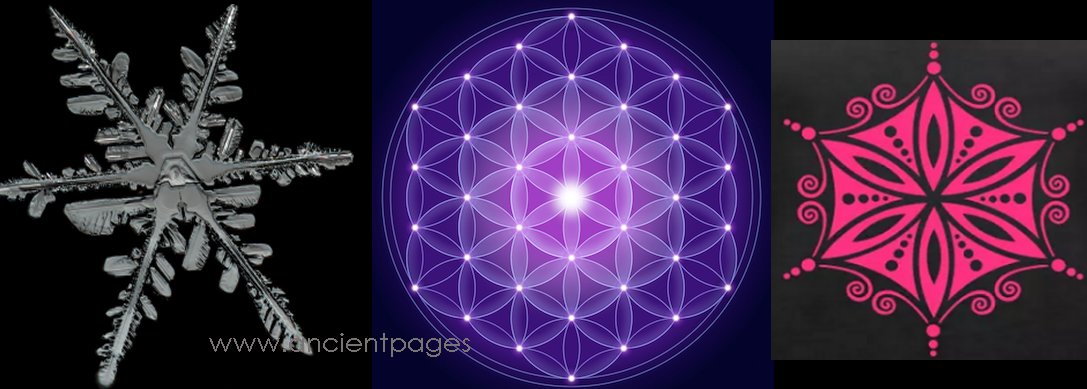
Left: A snowflake symbolizes water, which is crucial to all life; Middle: The Flower of Life (Creation Mandala) forms a flower-like pattern with sixfold symmetry, similar to a hexagon. The center of each circle is on the circumference of six surrounding circles of the same diameter. Right: Flower of Aphrodite, number six being the sexual number especially sacred to the Goddess Aphrodite
The Pythagoreans (6th BC), who followed the teachings and beliefs held by Pythagoras and were largely influenced by mathematics and mysticism, considered number 6 to be the first perfect number. They said that after a period of 216 years, which number is the cube of 6, all things are regenerated. This was the periodic time of the re-birth of the human being after each death.
When multiplied into itself, six has also always itself in the unit place, for example, 6, 36, 216, 1296, and 7776.
Written by – A. Sutherland AncientPages.com Staff Writer
Copyright © AncientPages.com All rights reserved. This material may not be published, broadcast, rewritten or redistributed in whole or part without the express written permission of AncientPages.com
Expand for referencesMore From Ancient Pages
-
 Time Capsule – Best Preserved 3,000-Year-Old Dwelling Ever Found In Britain
Archaeology | Jan 12, 2016
Time Capsule – Best Preserved 3,000-Year-Old Dwelling Ever Found In Britain
Archaeology | Jan 12, 2016 -
 Scythians Were Not Always Nomadic Warriors Of The Pontic Steppe In Black Sea Region
Archaeology | Mar 19, 2021
Scythians Were Not Always Nomadic Warriors Of The Pontic Steppe In Black Sea Region
Archaeology | Mar 19, 2021 -
 Art Historians Solve Mystery Of Raphael’s Tomb By Reconstructing His Face
Archaeology | Aug 7, 2020
Art Historians Solve Mystery Of Raphael’s Tomb By Reconstructing His Face
Archaeology | Aug 7, 2020 -
 Ancient Giant Amphibians Swam Like Crocodiles 250 Million Years Ago – New Study
Archaeology | Mar 31, 2023
Ancient Giant Amphibians Swam Like Crocodiles 250 Million Years Ago – New Study
Archaeology | Mar 31, 2023 -
 Artificial Intelligence (AI) Unravels Secrets Of 22,000 Ancient Cuneiform Tablets
Artifacts | Feb 2, 2023
Artificial Intelligence (AI) Unravels Secrets Of 22,000 Ancient Cuneiform Tablets
Artifacts | Feb 2, 2023 -
 Unique Virtual Look At Gamla Uppsala: Sacred Ancient Viking And Pagan Site In Sweden
Civilizations | Sep 19, 2016
Unique Virtual Look At Gamla Uppsala: Sacred Ancient Viking And Pagan Site In Sweden
Civilizations | Sep 19, 2016 -
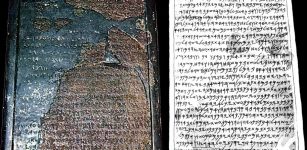 New Reading Of Mesha Stele And Consequences For Biblical History
Archaeology | May 2, 2019
New Reading Of Mesha Stele And Consequences For Biblical History
Archaeology | May 2, 2019 -
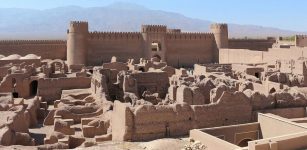 Graves Dated To Achaemenid Or Parthian Empire – Found In Iran
Archaeology | Aug 15, 2018
Graves Dated To Achaemenid Or Parthian Empire – Found In Iran
Archaeology | Aug 15, 2018 -
 Bones Of Giants Unearthed In Ancient Cave
Featured Stories | Sep 23, 2018
Bones Of Giants Unearthed In Ancient Cave
Featured Stories | Sep 23, 2018 -
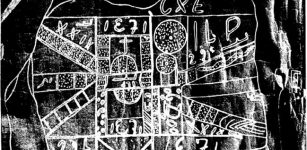 Undeciphered Ancient Stone Maps With Mysterious Signs May Hold Key To The Spider Rock Treasure
Artifacts | Apr 29, 2014
Undeciphered Ancient Stone Maps With Mysterious Signs May Hold Key To The Spider Rock Treasure
Artifacts | Apr 29, 2014 -
 USC Archeologist Discovers Maya Royal Burial Site
Archaeology | Jan 9, 2016
USC Archeologist Discovers Maya Royal Burial Site
Archaeology | Jan 9, 2016 -
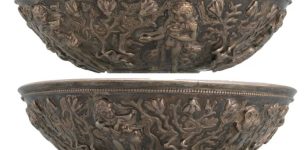 Surprising Discovery Reveals Ancient Tibetan Bowl Shows Alexander The Great – The Jewish Version And Not The Homer’s Iliad
Archaeology | Apr 28, 2022
Surprising Discovery Reveals Ancient Tibetan Bowl Shows Alexander The Great – The Jewish Version And Not The Homer’s Iliad
Archaeology | Apr 28, 2022 -
 Why Did Vikings Burn And Bury Their Longhouses?
Ancient Traditions And Customs | May 3, 2017
Why Did Vikings Burn And Bury Their Longhouses?
Ancient Traditions And Customs | May 3, 2017 -
 Secret Underground Ancient Teotihuacan Tunnel May Solve A Long-Standing Mystery And Reveal Royal Tombs
Civilizations | Jul 8, 2016
Secret Underground Ancient Teotihuacan Tunnel May Solve A Long-Standing Mystery And Reveal Royal Tombs
Civilizations | Jul 8, 2016 -
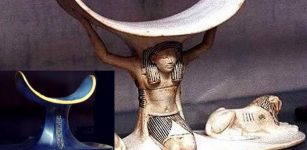 Why Did Ancient Egyptians Use Pillows Made Of Stone?
Ancient History Facts | Jun 18, 2018
Why Did Ancient Egyptians Use Pillows Made Of Stone?
Ancient History Facts | Jun 18, 2018 -
 How Did A Major Cooling Event 8,200 Years Ago Affect Hunter-Gatherers?
Archaeology | Jan 28, 2022
How Did A Major Cooling Event 8,200 Years Ago Affect Hunter-Gatherers?
Archaeology | Jan 28, 2022 -
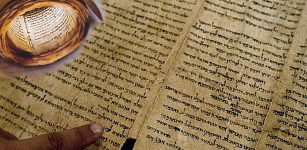 16 Dead Sea Scrolls Fragments Are Forgeries – U.S. Bible Museum Says
Artifacts | Mar 15, 2020
16 Dead Sea Scrolls Fragments Are Forgeries – U.S. Bible Museum Says
Artifacts | Mar 15, 2020 -
 Half-A-Million Year Old Signs Of Extinct Human Species Discovered In Polish Cave
Archaeology | Nov 30, 2022
Half-A-Million Year Old Signs Of Extinct Human Species Discovered In Polish Cave
Archaeology | Nov 30, 2022 -
 Europe’s Earliest Culture Of Aurignacian People Made Amazing Images With Dots
Archaeology | Mar 5, 2017
Europe’s Earliest Culture Of Aurignacian People Made Amazing Images With Dots
Archaeology | Mar 5, 2017 -
 Legendary ‘Orichalcum Metal’ Related To Atlantis Found In 2,600-Year-Old Shipwreck
Archaeology | Mar 3, 2017
Legendary ‘Orichalcum Metal’ Related To Atlantis Found In 2,600-Year-Old Shipwreck
Archaeology | Mar 3, 2017

